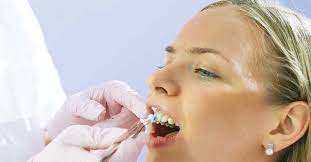Finally free from braces? Here’s what to do next

You’ve spent so much time surrounded by brackets and cables that it’s probably difficult to imagine. You may believe that your orthodontic experience stops after your braces are removed, but this is not the case.
However, you still have a little work ahead of you to guarantee your new smile remains flawless. The procedure is simple, and the payoff is a lifetime of healthy, straight teeth. While caring for your teeth post-braces, there are many critical points to remember to keep a radiant, healthy smile.
● More Straight Teeth
After braces are removed, you’ll find that your teeth are straight. Your smile will be flawless, but you will also avoid complications associated with misplaced teeth. For example, you used braces to develop a straighter smile and properly aligned teeth, and you should see changes in your smile as a consequence of wearing braces. Your orthodontist may have taken “before and after” photographs of your teeth to demonstrate your progress.
All of the time you spent attentively maintaining your dental hygiene and attending adjustments visits will finally pay off. Everybody is taking notice of your radiant, braces-free grin. Removing your braces is a significant difference, which your family and friends will notice, even more so now that they can see how even your teeth are.
If you already have braces or are considering getting braces, the result of a bright, straight smile is often the driving force behind orthodontic treatment. After your treatment is complete, you’re likely to notice a significant improvement in your smile and oral health!
● Convenient Brushing & Flossing
With no wires or brackets to bother with, cleaning and flossing your teeth will be quicker and more accessible, and you won’t need to use special brushes or flossing aids. However, it is important to continue brushing and flossing carefully to maintain the health of your freshly straightened teeth.
Brushing and flossing are significantly more convenient. There will be no more specialized brushes or flossing apparatus. Keeping your teeth clean is much simpler when you are not wearing a wire or braces. While removing impediments makes cleaning your mouth easier, this is not permission to relax. Especially when your tongue adjusts to the absence of metal and as you reintroduce specific items to your diet.
● Tender Teeth
Teeth are sensitive. Taking your braces off is similar to putting them on. It’s a significant shift, and your orthodontist may need to use force to remove the brackets and all of the adhesives from your mouth.
While it is not painful, you may notice that your teeth and gums are sore after your previous visit. While the feeling will likely be similar to how your mouth feels after a wire adjustment, it’s still prudent to be aware that immediately after braces removal may not be the most incredible time to insert a jawbreaker.
● Calluses
When you initially remove your brackets from your teeth, you may see calluses on the insides of your lips where brackets scraped against sensitive skin. These occur quickly after your braces are placed, although you usually are unaware of them until your braces are removed; however, do not be alarmed; they should ultimately go.
● Additional Therapy
You may still need more orthodontic treatment. However, braces are not always the last stage of orthodontic therapy. However, certain individuals continue to have additional problems that may be resolved with spacers, partial braces, or other remedies. While many patients leave with their retainers and beautiful, straight smiles, you can still follow up even after your braces are removed if you have additional concerns. For example, an Invisalign dentist near me can help with other forms of treatment.
Braces move teeth into a more desired position during teeth straightening. After removing elastic fibers in the gum, try to pull the teeth back into their original position, known as ‘orthodontic relapse.’ It takes time for your teeth and gums to adjust. Additionally, the jaw expands, which may stimulate tooth movement after treatment is completed.
You’re most in danger of teeth returning to their original positions shortly after your braces are removed, rather than wearing your retainer for a few months. It would be best if you were not concerned; retainers are discreet and comfy. If you have braces or consider getting braces, the result is often the driving force behind the orthodontic treatment. Once your treatment is complete, you’re sure to notice a significant improvement in your smile and oral health.
Visit for more articles: bestpost.org



